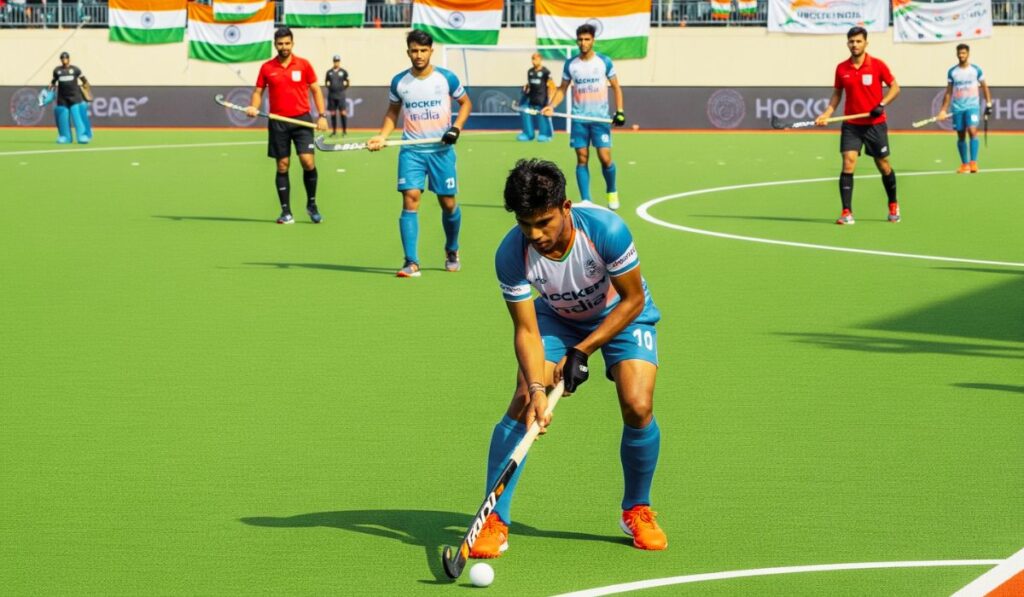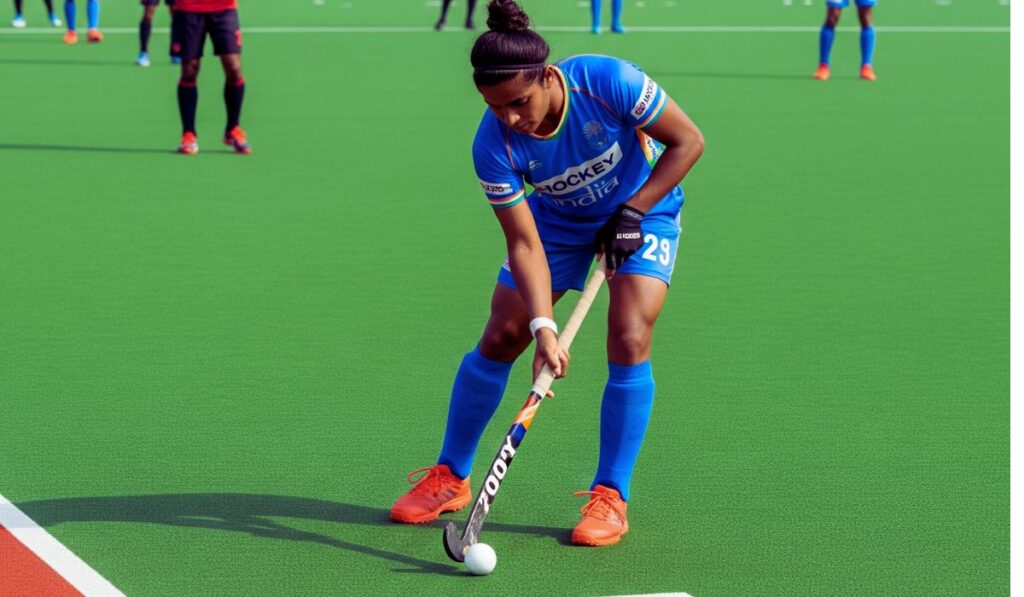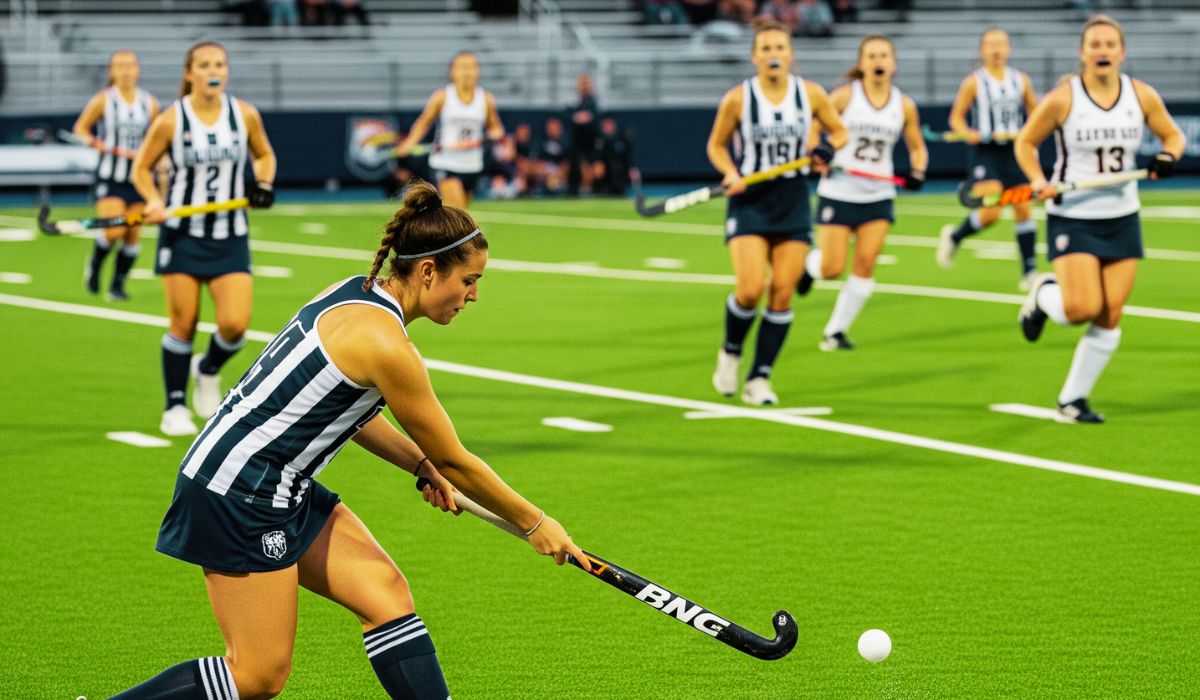You’ll Never Believe How the Long Corner in Hockey Can Make or Break Your Game
In the world of field hockey, every moment carries a pulse, every touch carries tension. One such moment is the long corner in hockey—a moment that can feel both exasperating and electrifying, frustrating yet full of possibility. When a long corner is awarded, the game holds its breath.
What Is the Long Corner in Hockey?
A long corner in hockey is awarded when the ball crosses the back line after being last touched by a defender, but not deliberately. Instead of conceding a penalty corner, the attacking team receives a free hit from the 23-metre line, in line with where the ball went out of play. In some local or older formats, long corners were taken from the sideline five yards from the corner flag where the ball crossed the line.
Despite its modest appearance, a long corner carries weight. It signals unsettled energy, raw opportunity—and occasionally, a hollow letdown.
The Emotional Tug of the Long Corner
There’s a magnetic pull to the long corner. For the attacker, it’s a flicker of hope—an unexpected chance to orchestrate brilliance from distance. But there’s also a sting. When that free hit turns into a squandered moment, nerves fray, and frustration settles like a heavy fog.
Imagine lining up at the 23-metre line: the hush of expectation, the curve of turf beneath your stick, the thrum of your heartbeat syncing with every breath. A clean strike, and the ball sails with a sweet hum toward the circle. Every receiver’s stance rediscovers purpose; defenders bristle with caution.
Rules That Shape the Long Corner
Under current FIH rules, the long corner is a free hit, with all the standard parameters of an attacking free hit within the attacking quarter—players must stay at least five metres away, and certain restrictions apply when the hit is close to the circle. Regional adaptations, like those in some college competitions, maintain the concept: the ball must either touch another player’s stick or be dribbled at least five metres before entering the circle.
These layers of regulation may feel stifling, yet they shape the move’s subtle artistry and keep its danger in check.
Sensory Moments: The Crush and the Release
On the field, a long corner is a sensory tapestry. Your sweat, the slight give of the turf, the smell of earth and synthetic grass under stadium lights. You set your stick firm, angle it on the fade line, and feel the ball shimmy in place. The strike pulses through your palms, a clean thwack that vibrates up your arm.
Then the ball glides, low and trembling, until it gains altitude and arcs toward the heart of the circle. You watch, suspended, as it meets a teammate’s stick—maybe a slap, maybe a sweep—and everything unfolds in a flicker of motion.

Why It Matters—Strategically and Emotionally
The long corner in hockey is far from a simple restart. It’s a tactical pivot, a chance to dominate space without the sheer wall of defenders that a penalty corner presents. It demands creativity: diagonals, deception, timing. A hugging dive for the ball, a surface pass that draws defenders—and then a sudden lift. It’s ballet with brute force.
Yet too often, it unmasks gaps: poor reads, weak delivery, hesitation. And the blow of wasted potential lingers. You feel it—not in your head, but in your gut.
Coaching the Long Corner
Effective Long corner in hockey routines involve feints, movement, and screens. Coaches design variations—for instance, the taker moves away quickly to open space, creating lanes for a first-time sweep into the circle . Or the ball is driven swiftly to the edge and returned to a drag-flick specialist who unleashes a low, powerful shot.
These patterns evoke an almost sensual precision, but their execution is unrelenting in its stakes.
The Frustration Factor
There is nothing more deflating than a long corner that drifts into the circle too directly, only to be smothered by a defender’s stick. Or one that bounces awkwardly off grass, betraying the controlled delivery. The crowd’s murmur turns to a sigh, and your shoulders sag.
Long corners bring this bittersweet duality—they promise invention, and punish error.
The Thrill Reborn
But when they unfold with grace—when the ball slips into that perfect channel, a player whips a strike, and the ball kisses the net—the rush is fierce. You taste triumph on your tongue. The long corner transforms from a quiet restart into an exultant crescendo.
The Origins of the Long Corner Rule
The long corner in hockey hasn’t always existed in its current form. Its evolution tells a story about the sport itself—how it has adapted to balance fairness, flow, and safety. In early field hockey, a ball going over the back line off a defender often led to immediate penalty corners, regardless of intent. This created situations where defensive errors far from the goalmouth were punished harshly, slowing the game with repeated set pieces. Officials realized there was a need for a middle ground—something that rewarded the attacking side for its pressure but did not overly punish defenders for unintentional deflections. Thus, the long corner emerged. This change didn’t just alter gameplay—it reshaped the rhythm of attack and defense. Players now had to prepare for this unique restart, with all its tactical possibilities, instead of the predictable penalty corner scenario. Over the decades, the positioning and exact method of taking the long corner evolved with the game’s speed and professionalism. Yet the rule has held its essence: it is a moment that sits between promise and uncertainty, where the outcome depends entirely on creativity and execution.
Long Corner vs. Penalty Corner — The Strategic Divide
To the casual viewer, the long corner in hockey may appear as a lesser sibling of the penalty corner—but to players, the two could not be more different. A penalty corner is meticulously choreographed; teams drill those plays endlessly, knowing exactly who will strike, who will inject, and where the ball will go. In contrast, a long corner offers fluidity and unpredictability. Because defenders are not restricted to their back line and there is no protective gear involved, the defensive structure is looser, giving attackers both freedom and challenge. The space is larger, the passing lanes more open, but so is the defensive coverage. While a penalty corner is an almost theatrical display of precision, a long corner is improvisational jazz—players read the pitch, make split-second choices, and sometimes change the plan entirely after the whistle blows. Coaches often stress the psychological shift needed for each: penalty corners demand discipline and execution; long corners demand adaptability and imagination.
The Defensive Mindset Against Long Corners
For defenders, a long corner in hockey triggers a subtle but critical change in posture. Unlike penalty corners, there’s no luxury of specialized runners charging down the shot, no heavy gear, no set positions dictated by strict rules. Instead, defenders fan out, reading potential passing channels, while one or two mark the most dangerous attackers near the circle’s edge. The aim is to deny clean entry into the scoring area. Communication becomes paramount—one misplaced shout, one delayed reaction, and a dangerous ball can slide into the circle unopposed. Experienced defenders learn to watch the taker’s body language: the angle of the stick, the shift in weight, the direction of the first glance. This anticipation allows them to intercept or pressure the receiver before a shot materializes. Yet there’s an inherent tension—they must be close enough to contest possession but not so close as to encroach illegally before the ball is played.
The Art of Deception in Long corner in hockey Plays
Long corners are fertile ground for deception, and skilled attackers exploit this to devastating effect. The taker might appear to aim directly into the circle but instead send a disguised pass wide, luring defenders into over-committing before the ball is switched back inside. Other times, attackers will execute dummy runs, drawing coverage away from the true target area. The best teams hide their intentions until the very last second, sometimes even fooling their own players to keep movements unpredictable. Deception works particularly well in long corner in hockey situations because the defense is mobile rather than locked into a static penalty corner formation. This means defenders must constantly adjust, creating small windows for attackers to exploit. Coaches encourage varying the taker’s role—sometimes using a hard, driven ball; other times employing a soft, controlled pass. The unpredictability keeps opponents guessing and prevents them from settling into a comfortable defensive rhythm.
Weather and Pitch Conditions Affecting Long Corners
Even the most perfectly rehearsed long corner in hockey routine can unravel under the influence of weather and pitch conditions. On a wet turf, the ball zips across the surface faster, making timing more critical for both attackers and defenders. A dry pitch can slow passes, forcing players to generate more power and sometimes overhitting their targets. Wind, often underestimated, can subtly influence aerial or lifted balls during long corners, especially in open stadiums. Experienced players adapt—shortening passes in gusty conditions, using more controlled sweeps on slow surfaces, or adjusting positioning to account for skids on water-based turf. Weather not only changes the physical game but the mental one as well; a team that can remain composed and flexible in challenging conditions often gains the upper hand in long-corner scenarios.
Role of the Playmaker in Long Corner Execution
Every great long corner in hockey routine has one constant: a playmaker who sees the game a split second before everyone else. This player—often a midfielder with exceptional vision—reads defensive gaps, scans passing options, and delivers a perfectly weighted ball to trigger the attack. While the taker initiates the play, the true magic happens in the link between the taker and the playmaker. A well-timed give-and-go, a sudden acceleration into space, or a delicate deflection at the circle’s edge can break even the most disciplined defense. Playmakers are trusted implicitly; they are expected to stay composed under pressure and to adjust instantly when the defense disrupts the initial plan. Many teams revolve their long-corner strategies around these individuals, tailoring movements to exploit their specific strengths.
Psychological Pressure in Long Corner Moments
Pressure in sport isn’t just about the scoreboard—it’s about moments. The long corner in hockey is one of those moments that can define the flow of a match. Attacking teams feel the weight of expectation; squander the opportunity, and it can deflate the side’s momentum. Defending teams face a different strain: hold the line here, and you not only deny a scoring chance but also shift the psychological balance in your favor. The mental strain is amplified in close games or knockout matches, where one goal can mean the difference between victory and heartbreak. Seasoned players learn to breathe through the moment, focusing on execution rather than outcome. Younger or less experienced players may let nerves creep in, resulting in rushed passes or defensive lapses.
Long Corners in Historical Matches
There have been countless matches in which a long corner in hockey has changed the outcome entirely. In the 2018 Women’s Hockey World Cup, several games saw decisive goals originating from long-corner plays that caught defenses off-guard. These moments often highlight the importance of being prepared—not just for the glamour of penalty corners but for the subtler, quieter restarts that can prove equally lethal. Analysts and commentators frequently point to long corners as underappreciated turning points in matches, noting how they can expose tactical weaknesses or showcase team creativity.
Training Drills for Perfecting Long corner in hockey
Elite teams dedicate entire training segments to long corner in hockey scenarios. Drills often involve simulating different defensive responses—tight man-marking, zonal coverage, or aggressive pressing. By rehearsing against multiple defensive shapes, attackers learn to identify and exploit the right spaces. Coaches also integrate conditioning into these drills to mimic match fatigue, ensuring that players can execute precise long-corner plays even when tired. Video analysis further sharpens performance, allowing players to study their positioning, ball speed, and timing. The emphasis is on repetition with variation—practicing standard plays but also encouraging improvisation to keep opponents guessing.

The Crowd’s Influence on Long corner in hockey Outcomes
While not directly part of the game mechanics, the crowd’s energy can play a subtle role in long corner in hockey success. A roaring home audience can fuel attackers, making them bolder in their choices, while a hostile away crowd might rattle less experienced players. Noise levels can even impact communication between teammates, sometimes forcing them to rely on visual cues instead of verbal calls. Teams that can harness or block out crowd influence gain an edge in high-pressure situations.
Common Mistakes in Long corner in hockey Plays
Despite their potential, long corner in hockey situations are often wasted due to preventable errors. Overhit balls that skip past the intended receiver, predictable passing patterns, and failure to adjust to defensive positioning are common culprits. Another frequent issue is impatience—players trying to force the ball into the circle before creating the right opening. Coaches stress the need for composure: it’s better to recycle the ball and reset the attack than to hand possession back cheaply.
Variations Across Different Hockey Leagues
Not all leagues handle the long corner in hockey identically. Some local competitions still follow older placement rules, taking the hit closer to the corner flag, while others have fully adopted the 23-metre line standard. These differences can impact tactics, especially for teams moving between domestic and international play. Players must adapt quickly, understanding the nuances of each competition’s interpretation to avoid costly mistakes.
Long Corners in the Modern Fast-Paced Game
As hockey becomes faster and more dynamic, the long corner in hockey has grown even more valuable. Quick restarts can catch defenders off-guard, especially with the self-pass rule allowing takers to dribble immediately after the whistle. This has led to innovative plays where the taker sprints forward before passing, compressing defensive reaction time. Speed is now as crucial as precision, and the most successful teams are those who blend both seamlessly in their long-corner routines.
Why Mastering the Long CornerLong corner in hockey Is a Mark of Great Teams
In the end, the ability to capitalize on the long corner in hockey reflects a team’s overall discipline, creativity, and adaptability. It’s not about raw power or singular talent—it’s about synergy, awareness, and the collective ability to turn a half-chance into a decisive moment. Great teams don’t view long corners as mere restarts; they see them as opportunities to write the game’s next chapter.


1 thought on “Long corner in hockey”